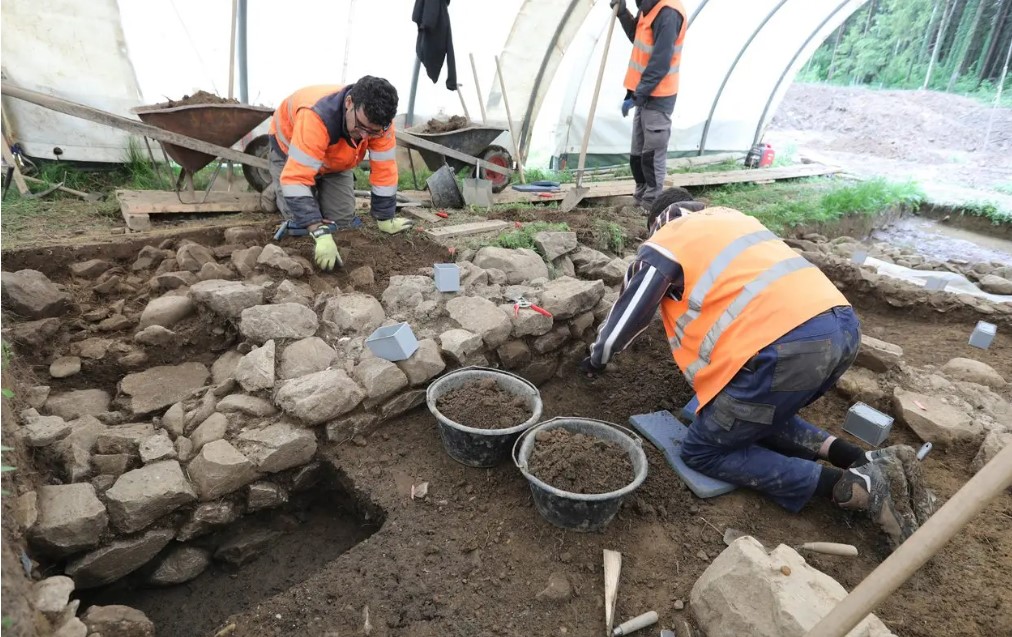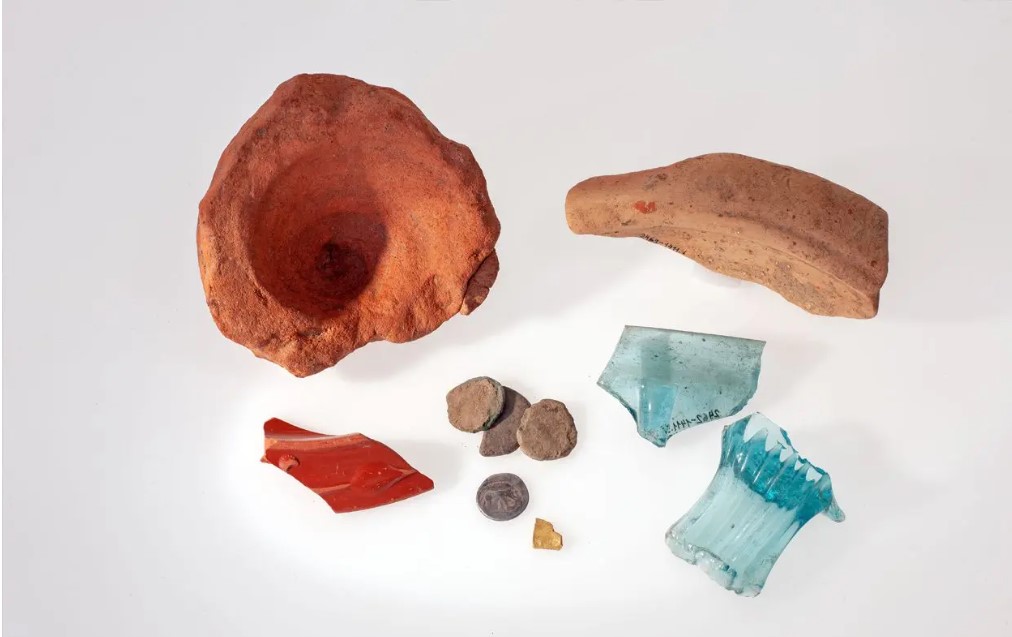Ancient Roman Complex Revealed in Gravel Quarry near Cham-Oberwil, Switzerland
Archaeological experts from the Office for Monument Preservation and Archaeology have made a remarkable discovery at a gravel quarry close to Cham-Oberwil in Zug, Switzerland. During their excavations, they unearthed an expansive Roman complex, shedding light on a lesser-known aspect of the region’s history.
Positioned on an elevated site within the Äbnetwald area, which has previously yielded relics from the Bronze Age and Iron Age eras, the location has been subject to rescue excavations since the 1990s. Recent investigations have revealed extensive Roman structures and chambers, forming a complex spanning a minimum of 500 square meters.

Estimated to be around 2,000 years old, this complex offers a fresh perspective on the widespread Roman presence in the pre-Alpine territory of Central Switzerland—a topic not deeply explored for nearly a century.
Professor Christa Ebnöther, an authority on Archaeology at the University of Bern, commented, “The rarity of such sizable architectural remnants from the Roman epoch in the pre-Alpine vicinity sets this discovery apart. Equally astonishing is the relatively impeccable condition in which these remnants have endured.”
The precise dimensions and purpose of the complex remain subjects of ongoing investigation. Archaeologists speculate that it might have functioned as an expansive villa or, alternatively, a place of worship, perhaps even a temple.

Among the foundational walls of the complex, the research team has also come across an array of commonplace items and objects of significance. These include imported Roman pottery like terra sigillata originating from Italy and Gaul, a fragment of gold, an assortment of coins, glass vessels, fragments of amphorae, and a substantial quantity of iron nails presumably from a wooden structure.
Karin Artho, Head of the Office for Monument Preservation and Archaeology, expressed gratitude for the collaborative efforts that have enabled them to gather these insights. “Through this exceptional collaboration, we’ve had the privilege of documenting numerous discoveries and safeguarding invaluable artifacts in recent years,” Artho stated. “These pieces enrich the historical narrative, allowing us to retrace the lives of our forebears and attain a deeper comprehension of our past.”




